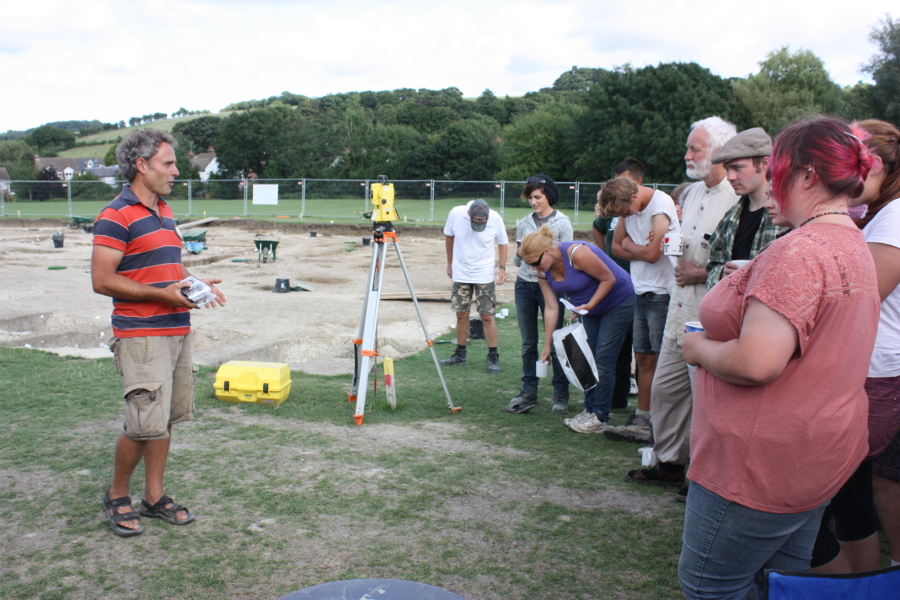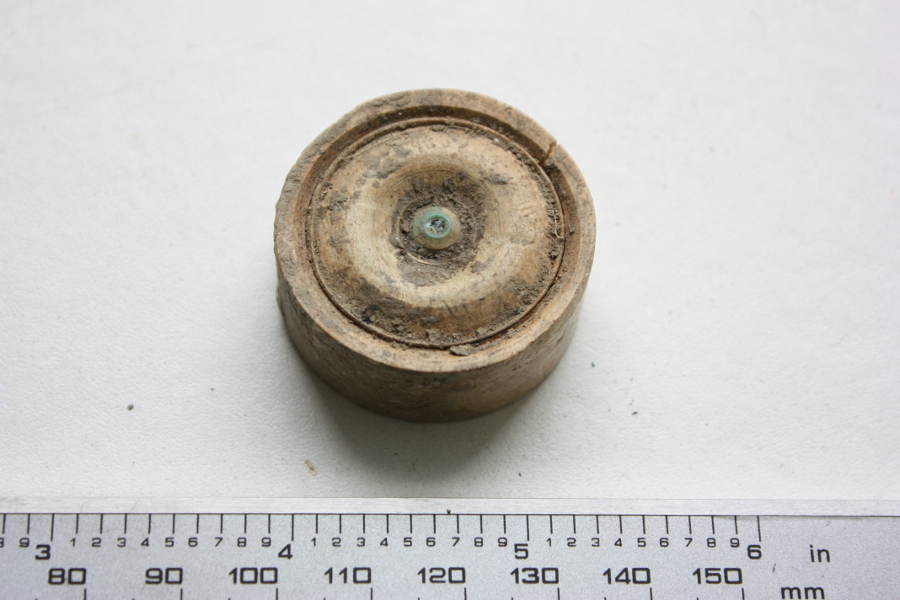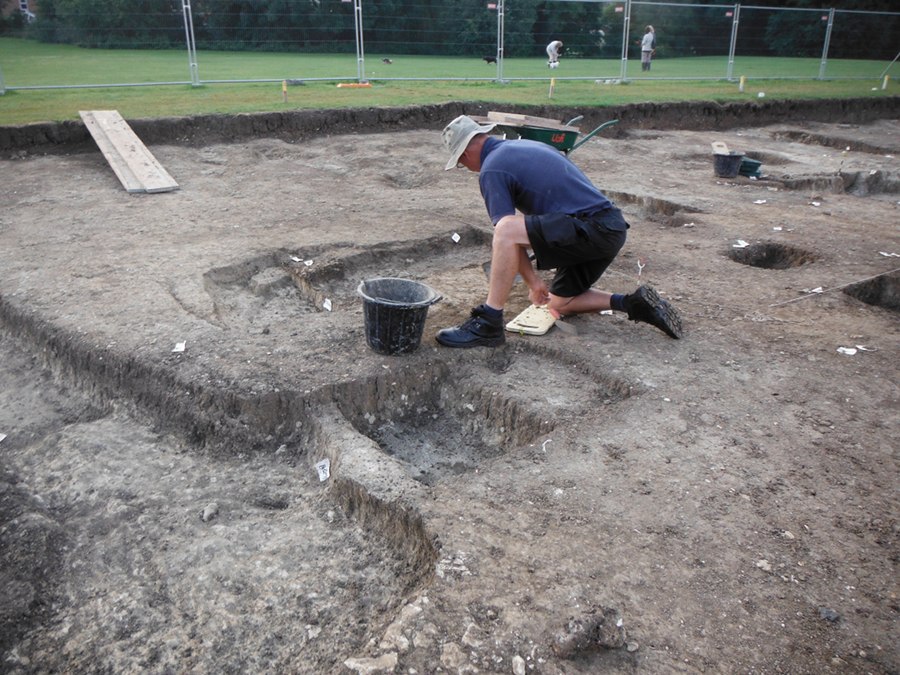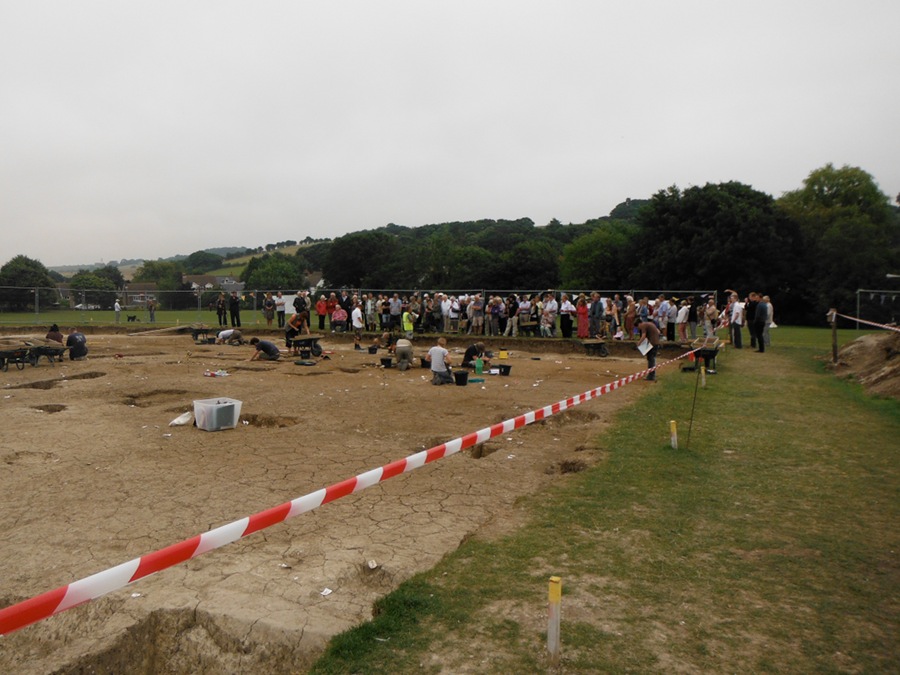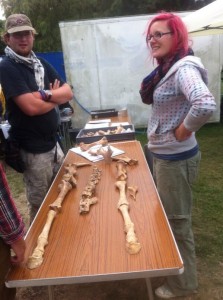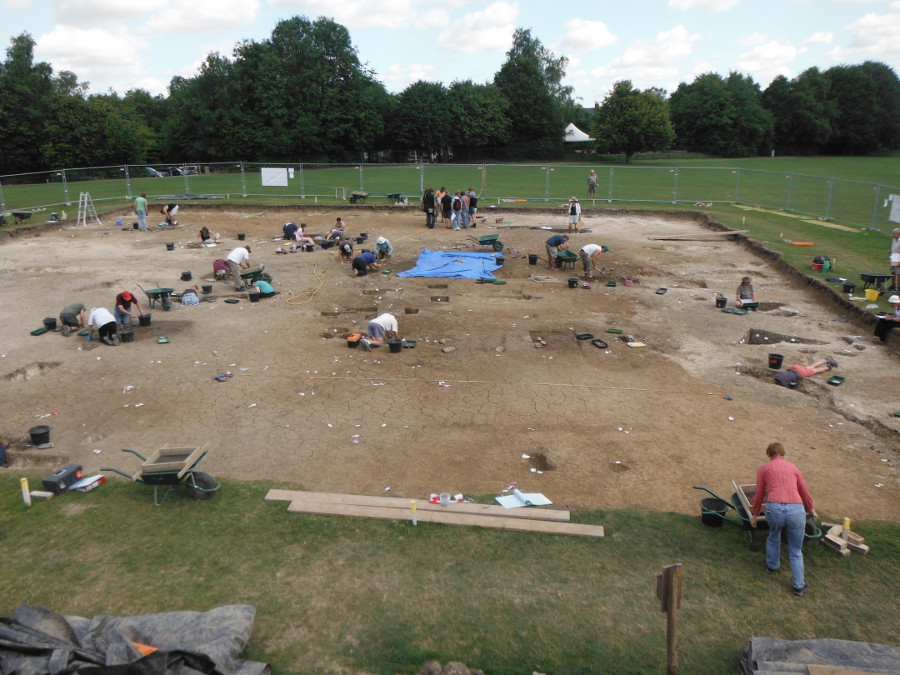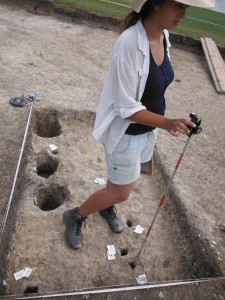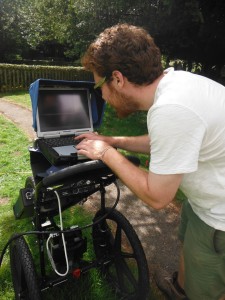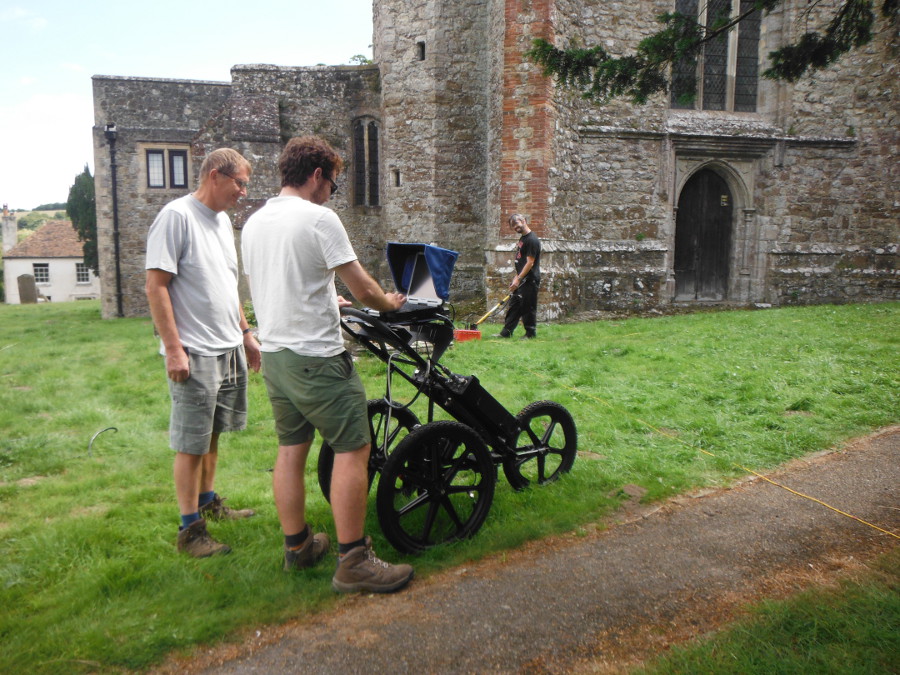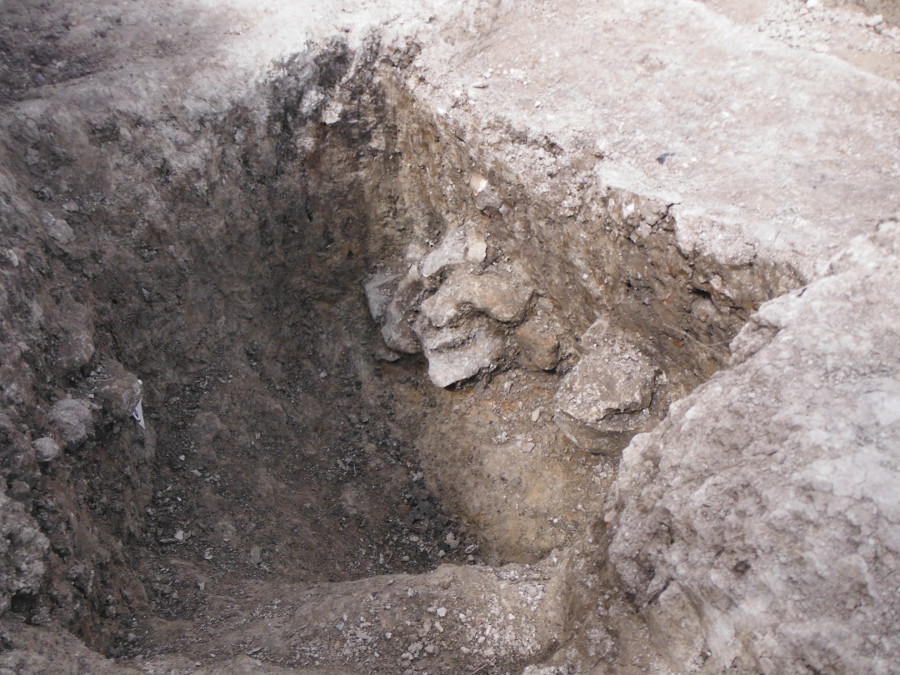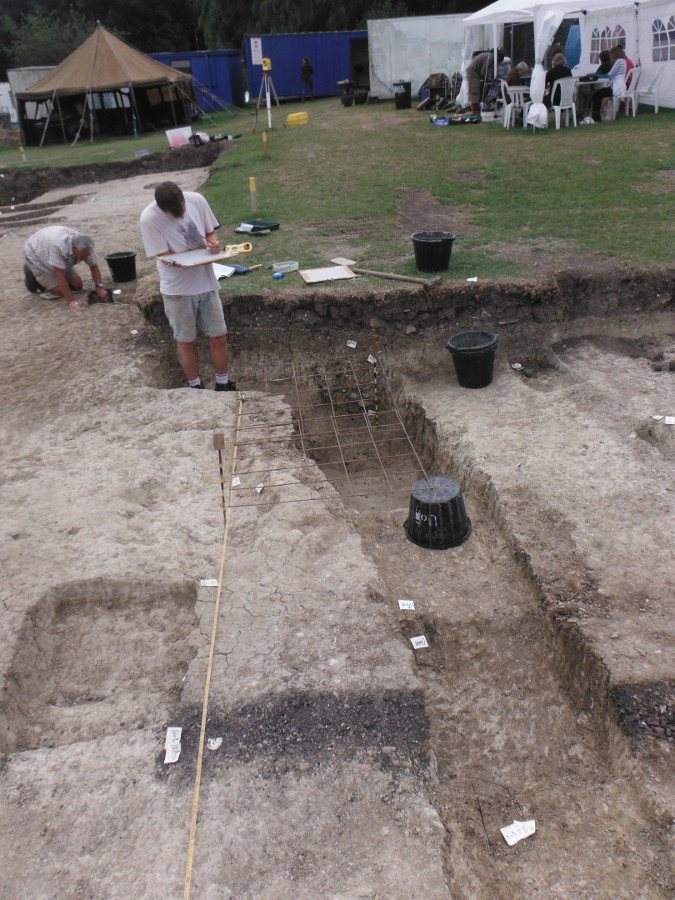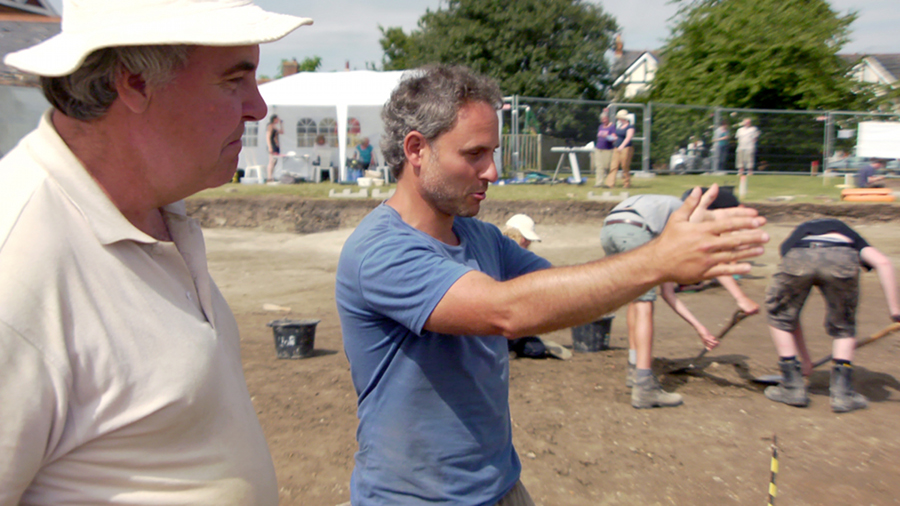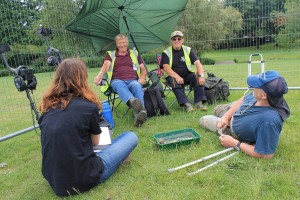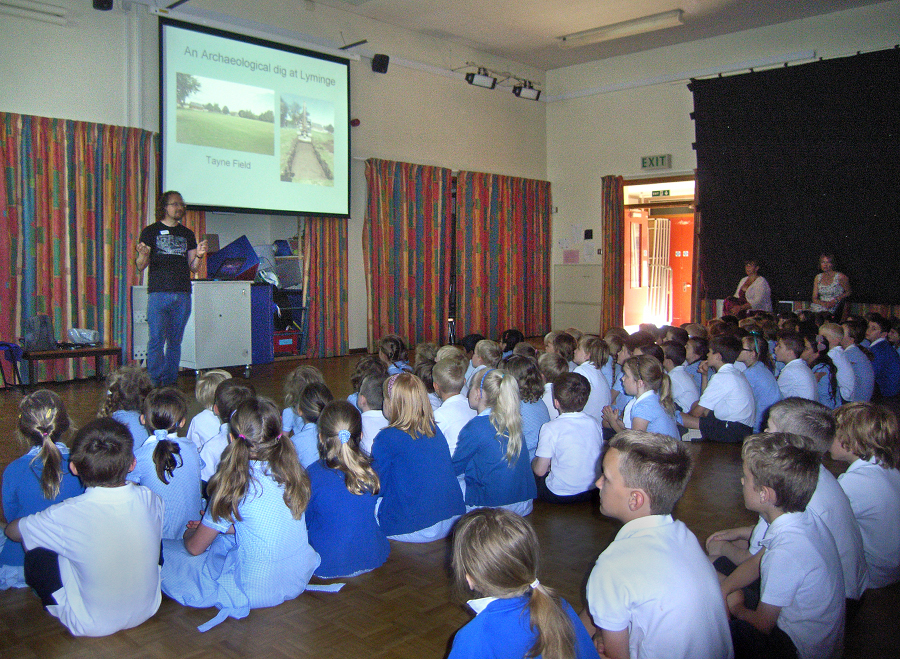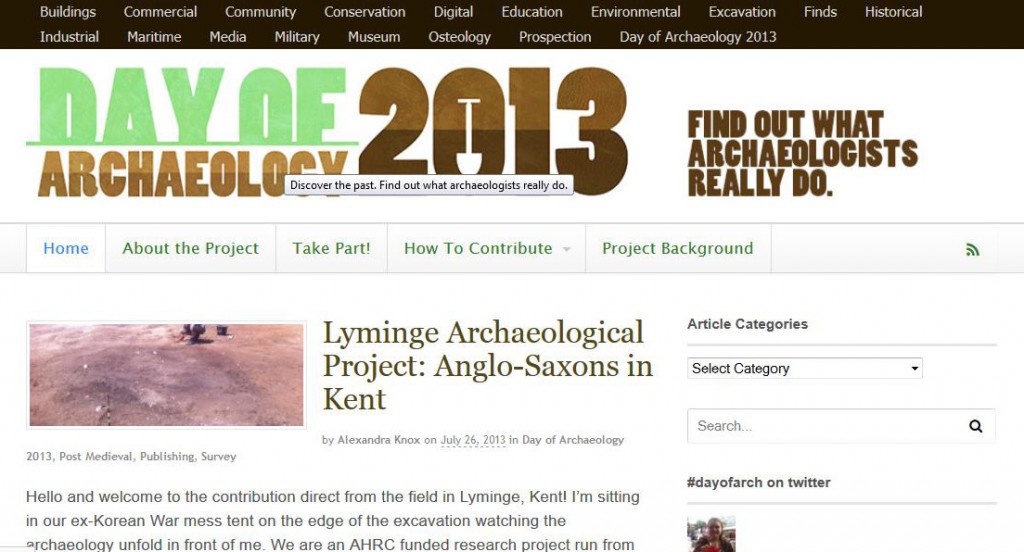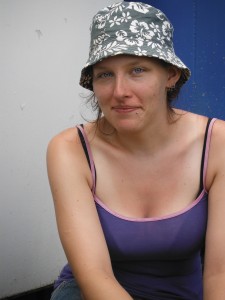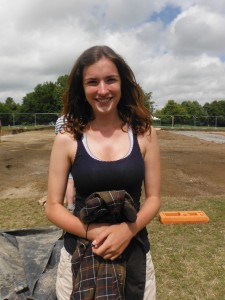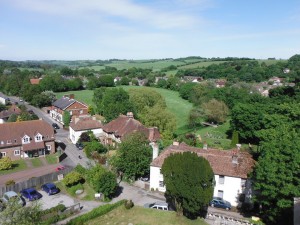It has been a few weeks since the end of the dig and lots has happened, indeed we’ve been so busy I haven’t had time to blog! At last things have settled down and I am able to give you a round up of the final discoveries of the Lyminge excavations 2013. Gabor stayed an extra week with Andy Macintosh and a couple of volunteers to get the trench completely finished while I returned to the department to deal with the more mundane administrative things required to run an excavation that had been stacking up! We had more archaeology in this trench than we’ve ever encountered before at Lyminge, so it really was down to the wire. We had an absolute deadline, too, as Gabor and I were off to Germany to a conference on the Saturday following the official end of the dig.
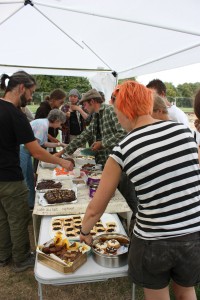
Everyone piles in to the wonderful spread – huge thanks to all the amazing people who baked for the hungry diggers!
But first, to more important things! On the last Friday of the dig it is now traditional to thank our volunteers, particularly those who have gone the extra mile, and to eat rather a lot of cake. Our wonderful volunteers rustle up some amazing goodies and we certainly all piled in!
This last little ‘hurrah’ on the dig is especially to thank people like Keith Parfitt and Andy Macintosh, who come to us from Canterbury Archaeological Trust, but who both give up lots of their free time for the dig too. We have some volunteers who spend nearly every single digging day with us, so we took the opportunity to thank them too, people like Les, Peter and Richard, John and Frances Locke, and volunteers who help with very specific and important things, like Rosemary and John Piddock who took fantastsic photographs of our small finds, and Bill Laing who came with his helicopter drone to take aerial shots as often as he could – it was suprisingly windy this summer! There are so many people to thank that it’s hard to keep up! Our finds washing team were fantastic, as ever, with so many that we know well from five seasons of digging.

Some of our dedicated finds washing volunteers – many of whom also brought cake on the last Friday of the dig!
But what of the archaeology? By the end of the extra 7th week of the dig, we had the ‘camera on a pole’ man, Peter, come from Hawkeye Elevated Photography to take photos. He has an extremely tall telescopic pole that extends from his Land Rover to take wonderful photos from above, and we end up with fantastic pictures like this:
As you can see from the photo, not only did the weather hold out, but a huge amount of archaeology was completed this year. Three timber hall buildings were 100% excavated, as well two sunken-featured buildings, three very large and unsual early Saxon pits and the corner of a fourth timber hall in the extension trench. This doesn’t include dealing with the archaeology from a range of other periods that we had to record and draw just as carefully.
Unusual features popped up too in the last week – the partition wall that we discovered in the largest timber hall that had the enormous doorway pits turned out also to have a huge pit across the threshold. We’re still working out why this might be, as usually partition walls would not need to so structurally dramatic. You can see in this fantastic photo that we have another huge doorway pit actually inside the final timber hall – the shadow gives away the depth.
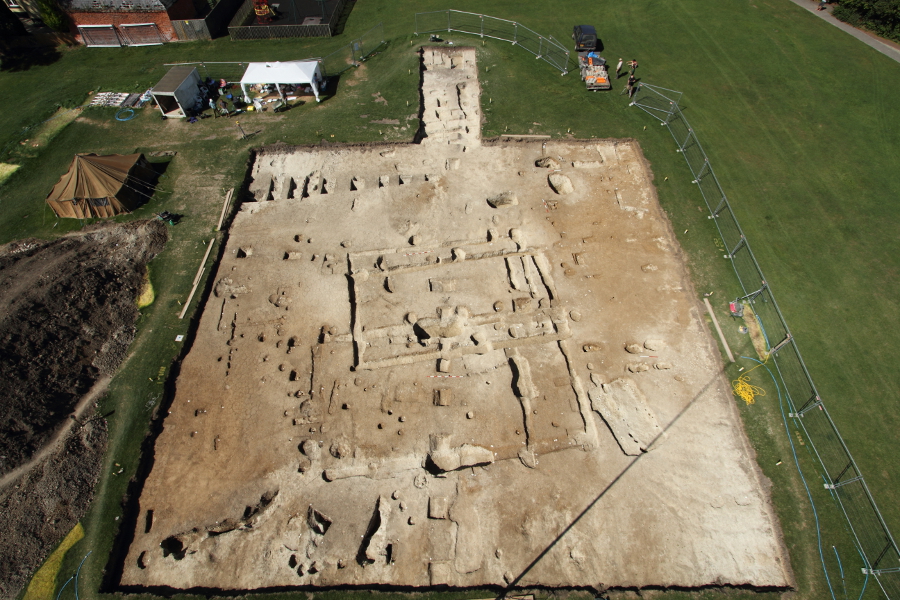
An aerial shot of the whole trench, taken from the East using a telescopic rig on a land rover, visible in shadow. The large partition wall doorway pit is visible in the easternmost building in the foreground. (Photo by Hawkeye Elevated Photography)

Helicopter drone photogrpah of the site on the 1st September 2013. Click to enlarge. (photo by William Laing)
If you compare to the aerial shot (right) that local resident William Laing took using a helicopter drone on the final ‘official’ day of the dig, you can see how much progress was made by Gabor and Andy in the last, very necessary, extra week of the dig.
If you’ve been following the blog you’ll remember that we discovered the corner of a particularly large timber hall in our ‘extension’ of the main trench, on the left (west) of the photo above right. Careful excavation of this area revealed something that we believe is unprecedented in the excavation of Anglo-Saxon hall buildings. In cleaning back a portion of the wall trench we revealed more of rows of wall planks that were placed within the wall trenches on construction of the buldings.

A section of wall trench excavated to reveal the settings of the rotted timber planks that formed the walls.
The next photo below shows the planks excavated, and you can see really well what an interesting and significant find this is.
The photo above shows three rows of planks – one double paired row and a third row of slightly larger and offset planks, all set in to the same wall trench. Further on (to the east) are two large round post holes. This is a really exciting find as so far we are not aware of any Anglo-Saxon buildings with this construction method. Additionally, you can see on the left up against the baulk, that there are very large external raking post settings packed with flints and other stones. We may be talking about a very substantial building here, and something to continue investigating next year!
There were also some really fascinating finds in the days of the dig. One of the most exciting was the discovery by David Holman, who helps us metal detect the site and who knows everything there is to know about coinage in Britain. He was in fact excavating, (rather than detecting!) a portion of wall trench in the complicated area where all the buildings intersect, and he discovered this wonderful bone and copper alloy gaming piece.
This little object is of great significance. While gaming pieces are known from the Anglo-Saxon period, this particular form is unusual. It is made of several pieces of bone held together by a central copper alloy rivet or pin, a ‘composite’ type. The only other parallels for this style of gaming piece in the British Isles are found in the princely burial at Taplow, Buckinghamshire. The Taplow burial contained such items as beautiful metal fittings from drinking horns, glass claw beakers and a gold and garnet buckle, artefacts on a similar level of richness to those at Sutton Hoo. Taplow has been dated to the very early 7th century (click the links to see images and descriptions on the British Museum website).
All of this detail shows us how Lyminge fits in with this incredibly high status suite of sites. Surprisingly, it is Italian Langobardic contexts that provide the best parallels to this gaming piece, and it has been suggested that these gaming pieces are coming via similar trade routes to those of the Byzantine bronze bowls that are found in wealthy elite graves of 7th century.
Our collection of glass certainly supports our understanding of Lyminge as a high status settlement! We ended the season with well over 100 fragments of glass, of a whole selection of types. Here above are just a few, proving that the vessels that are found in graves were not just for show and were certainly being used in every day feasting situations.
Finally, some of you may have heard about us moving the travelling exhibition that accompanies the digs to Dover Museum! Gabor and I set up the exhibition panels in the museum on Monday, and we were lucky enough to be featured on BBC South East Today last night (1st October 2013, 22 minutes in), as well as on the BBC News website. Have a click on the links to see the reports.
We have been able to install objects to go with the panels, and the exhibit is right next to the Anglo-Saxon galleries so you can see a range of Anglo-Saxon finds local to Lyminge and Dover.
There is lots more to digest from this summer, and once we have begun that process in earnest I can bring you more news. As usual I will be updating the blog throughout the year whenever we have something exciting to tell you about the project, so keep checking back to find out more about the exciting finds on Tayne Field!

